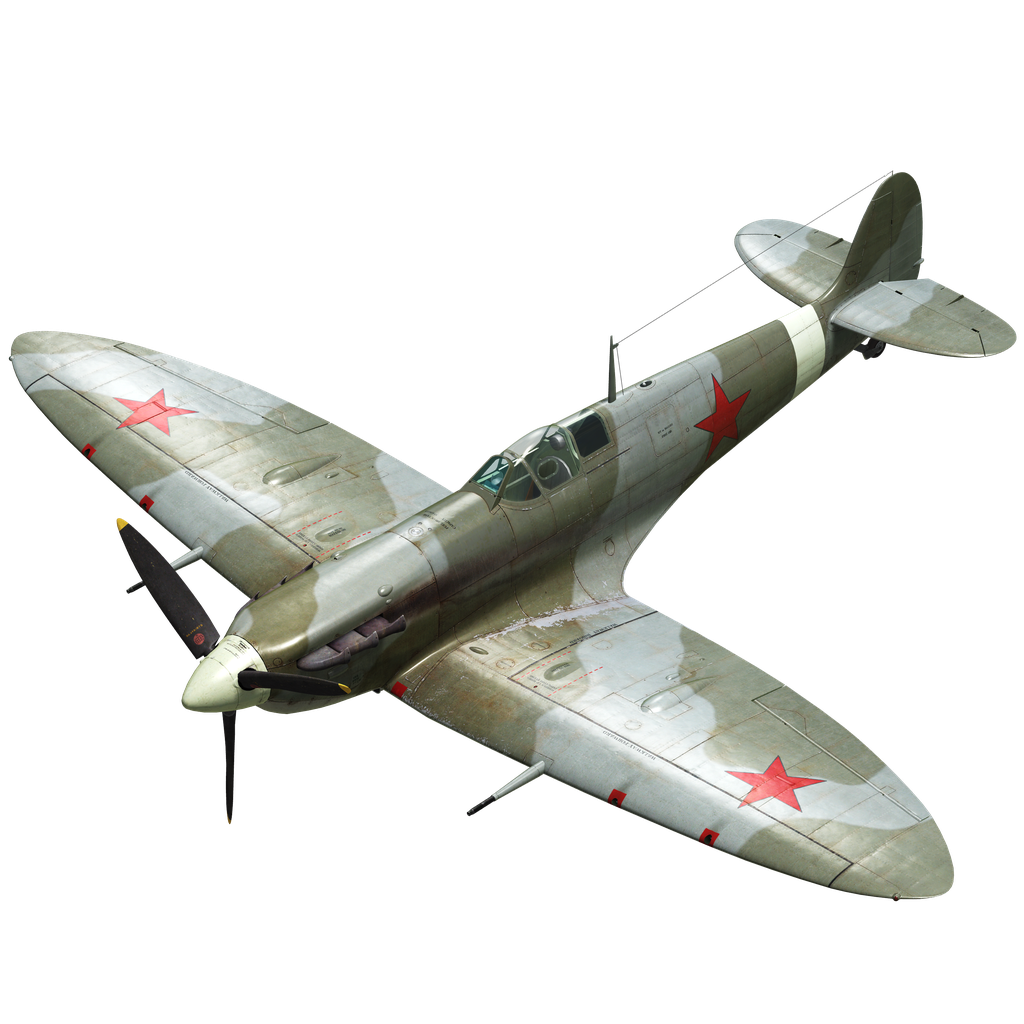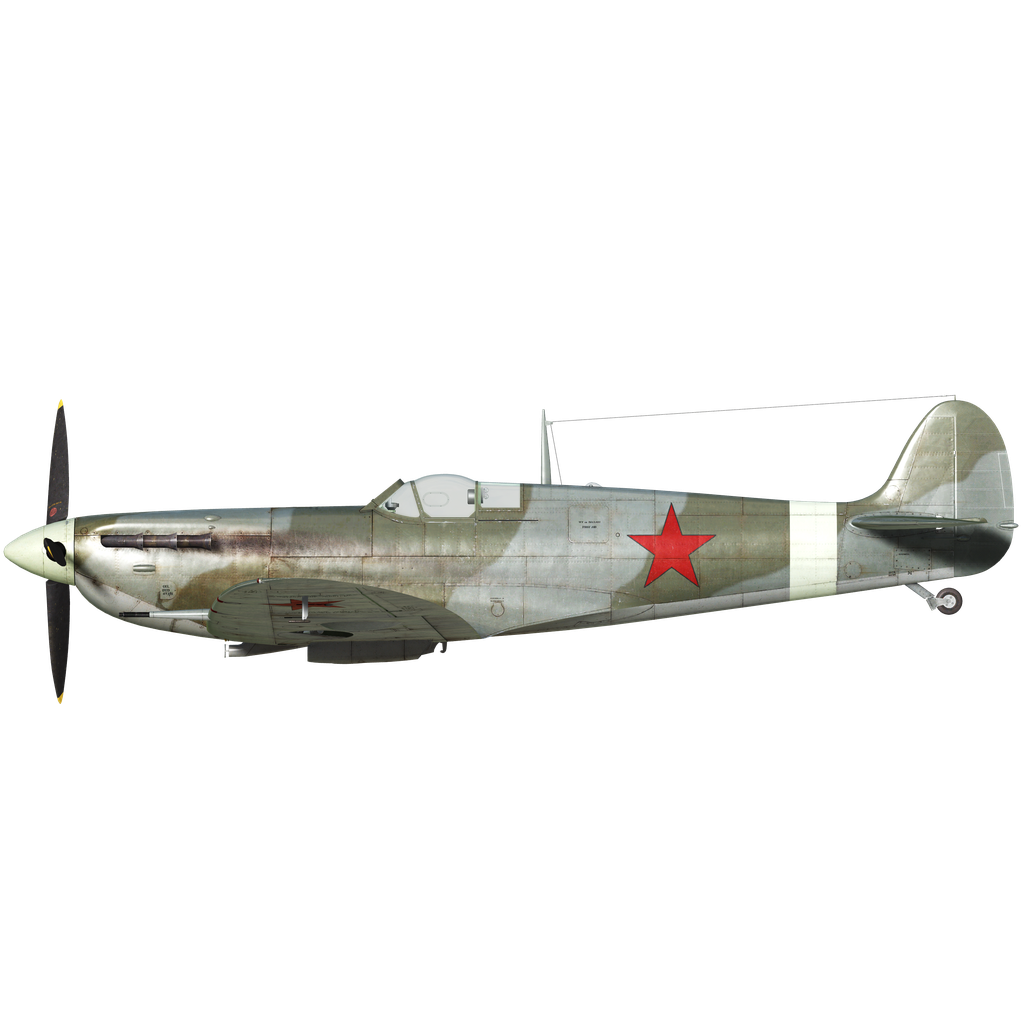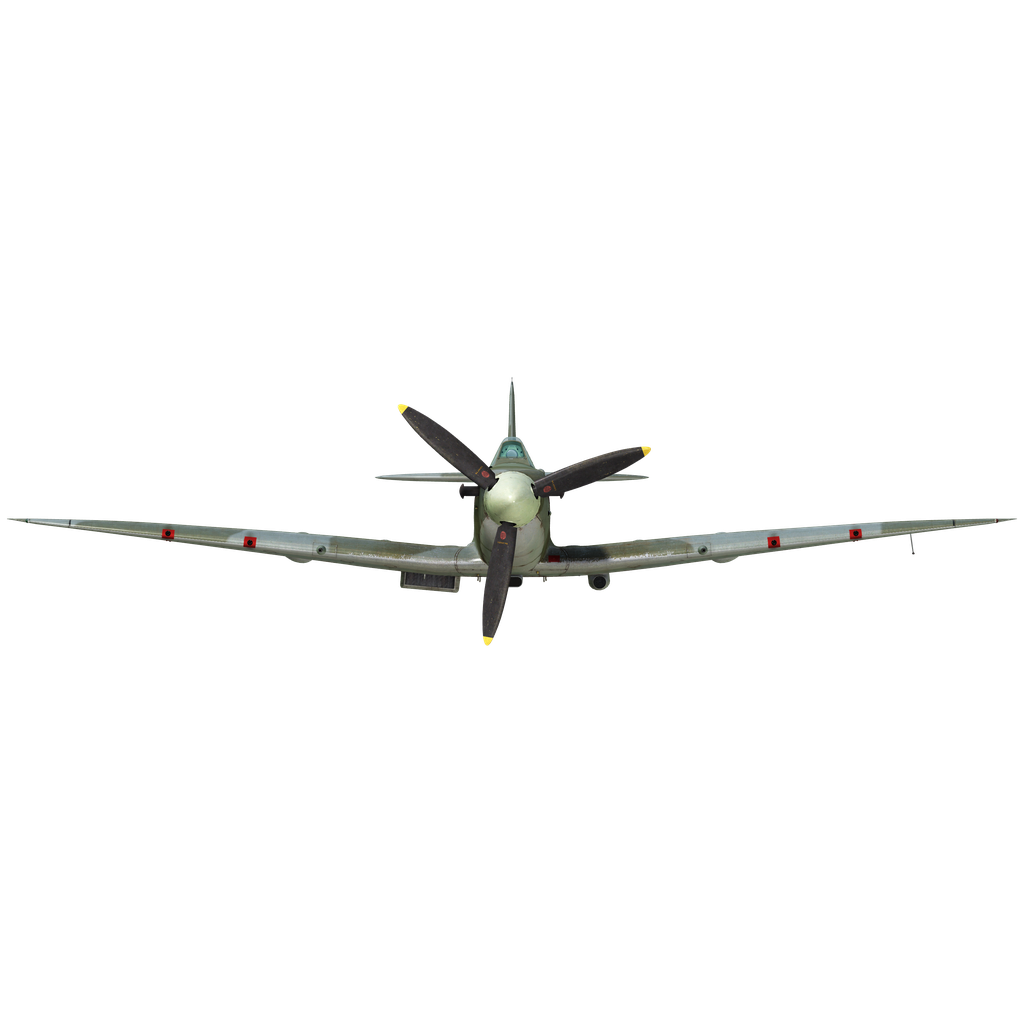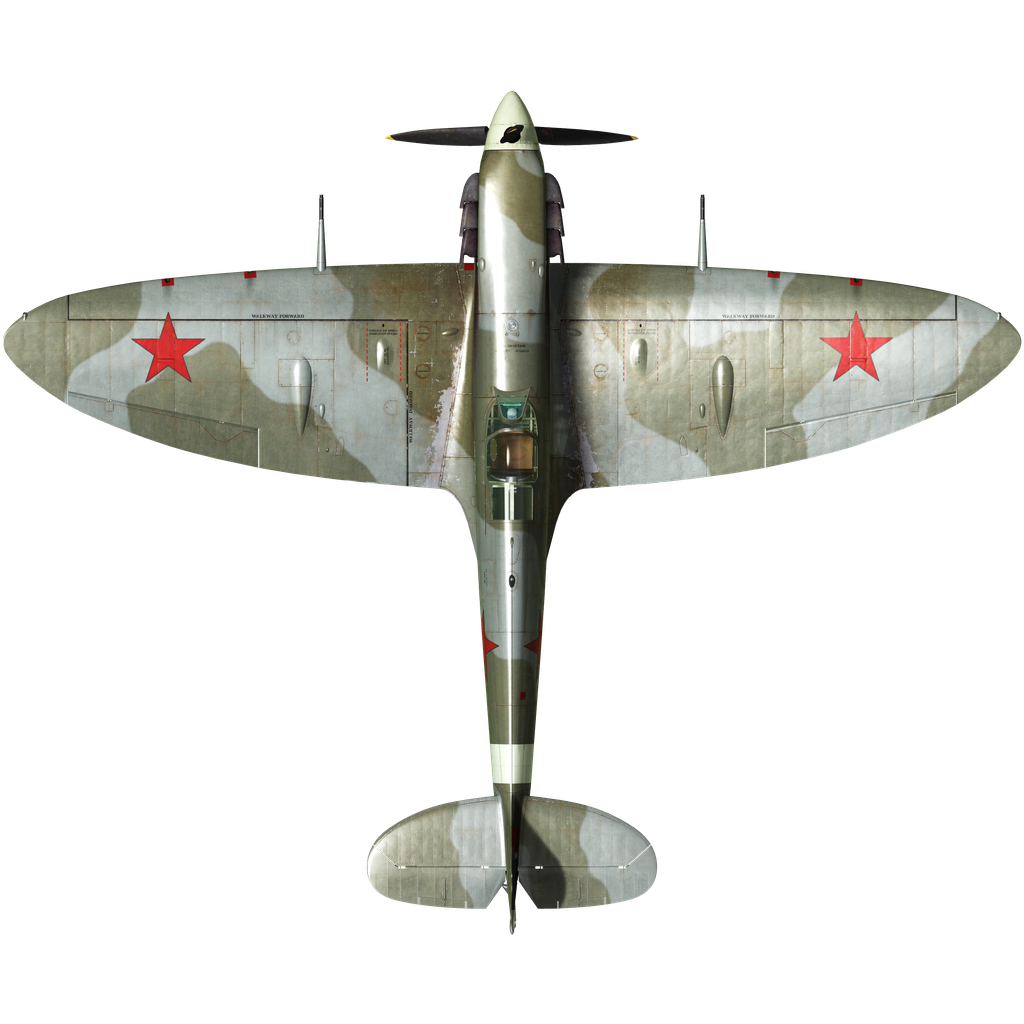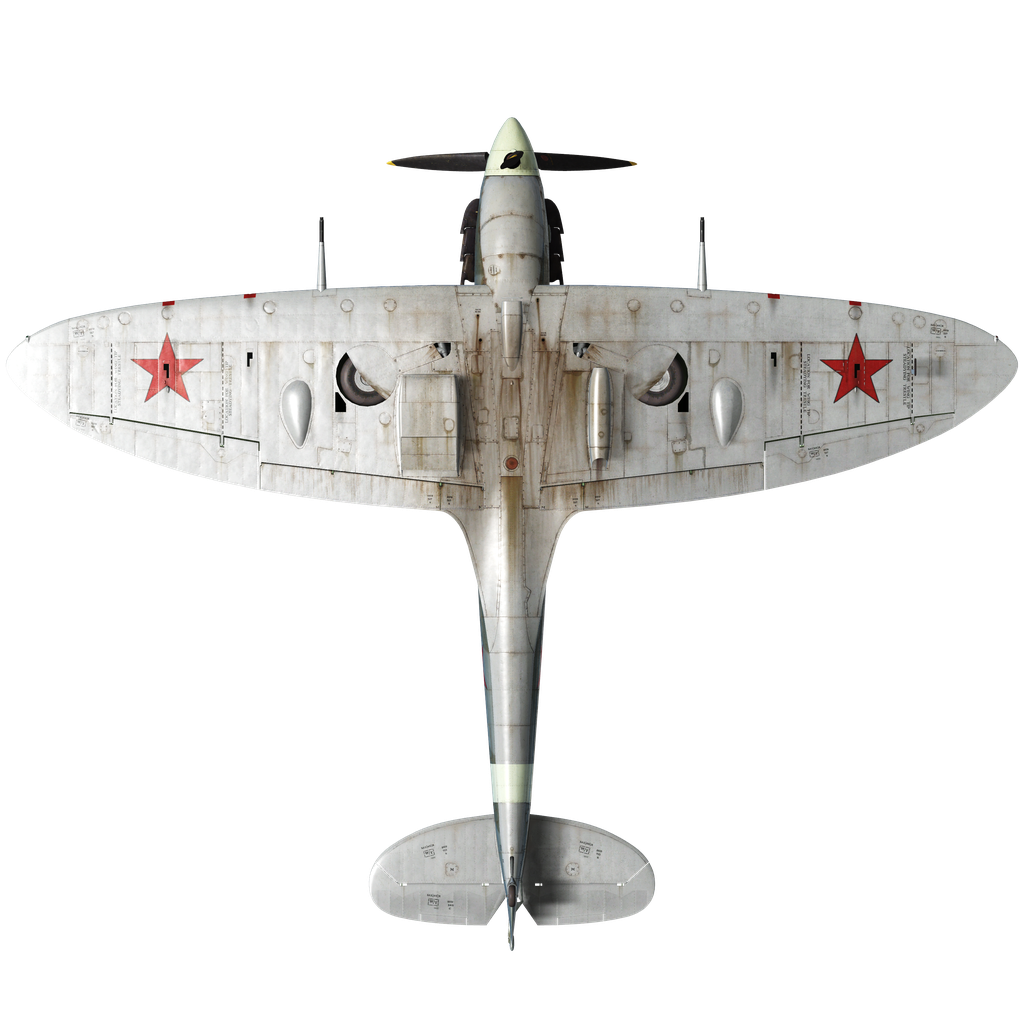In 1934, Supermarine, a company known for producing record-breaking sports aircraft, presented the Type 224 monoplane at the Royal Air Force (RAF) competition for a new fighter. However, the project lost the competition, and the designers began to rework it: the resulting aircraft was radically different from the original. The Spitfire was a fast and maneuverable interceptor fighter. It had an original elliptical wing, a closed cockpit, and the latest Rolls-Royce PV12 engine (later called Merlin). The armament was increased from four to eight machine guns, with four in each wing. The prototype first flew on March 6, 1936, and the first production aircraft on May 15, 1938. By the beginning of the war, the RAF had 306 Spitfires. However, air combat revealed several shortcomings, and so production of the Spitfire Mk.V began in March 1941.
The Spitfire Mk.V is a single-seat, single-engine monoplane of all metal construction with a cantilevered low-mounted wing. The fuselage is semi-monocoque, and the cockpit is located in the center section of the fuselage. The cockpit is enclosed by a glazed canopy with a sliding rear section that is convex to provide good visibility to the rear and sides. The pilot is protected by front armored glass, an armored seat back with an armored headrest, armor under the seat, and an armored plate in front of the front gas tank. The landing gear is designed as a double strut with a tail wheel: the main struts are located near the wing roots and are partially covered by fairings, which makes the wing thin but also reduces the track width, which makes the aircraft less stable when landing on rough airstrips.
The Mk.VB had two types of Merlin engines: the Merlin 45, which was a 'universal' engine adapted for low and medium altitude operation, developing 1185 hp at ground level, and the Merlin 46, a high-altitude engine developing 1100 hp at ground level. The tropical version of the Mk.VB/Trop had a dust filter installed on the carburetor air intake.
The Mk.V had different armament depending on the type of wings installed. The Type A had only machine guns, while the Type B had two Hispano cannons (drum-fed) and four Browning machine guns. In 1942, some of the aircraft were equipped with bomb racks at airfield workshops, thus creating a fighter-bomber with the ability to carry two 250-pound bombs.
A total of 6,500 Mk.Vs of various modifications were built. They fought on all fronts of World War II and more than 100 squadrons of the Royal Air Force were equipped with Mk.Vs. Spitfires were initially used for raids into enemy airspace and to cover light bomber raids in Western Europe. In August 1942, the Mk.V provided air cover for the landing at Dieppe. In Africa, tropical variants were used to protect Malta from air raids. The Spitfires and Bf 109 Fs fought on equal terms at low altitudes, but the Bf 109 G was slightly faster. The battles with M.C.202 showed that the Italian fighter was almost identical in combat capabilities to the Mk.V. It was superior to the Mk.V in climb rate at low altitudes but had weaker armament. The type also took part in the Sicilian Operation and the Invasion of Italy. At the time of the Normandy landings, most of the Mk.V models in first-line units had been replaced with more modern versions. However, some were still utilized during the landings. There were specially formed units that corrected artillery fire, giving accurate fire correction instructions. Second-line squadrons continued to use this model until the end of the war.
In October 1942, following Stalin's direct appeal to Churchill, Spitfire Mk.VBs were delivered to the USSR from Middle Eastern reserves. By March 1943, 143 aircraft were in service: some operating along the Black Sea coast of the Caucasus, others defending Moscow. According to German pilots, Mk.VBs took part in air battles near Orel at the end of 1943.
Portugal received approximately 50 Mk.VB aircraft starting in October 1943. In October 1944, several of these planes were sold to Turkey.
Used sources:
1. K. G. Munson “British Aircraft of World War II” 1962
2. V. Kotelnikov “Spitfire” Best Fighter of the Royal Air Force” 2019
3. Materials from the site airwar.ru
